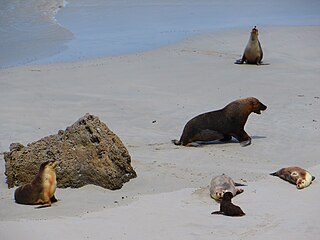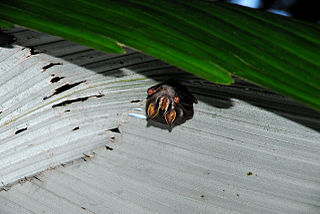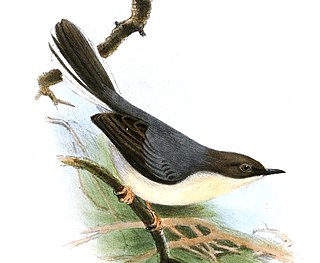
The Australian sea lion, also known as the Australian sea-lion or Australian sealion, is a species of sea lion that is the only endemic pinniped in Australia. It is currently monotypic in the genus Neophoca, with the extinct Pleistocene New Zealand sea lion Neophoca palatina the only known congener. With a population estimated at around 14,730 animals, the Wildlife Conservation Act of Western Australia (1950) has listed them as “in need of special protection”. Their Conservation status is listed as endangered. These pinnipeds are specifically known for their abnormal breeding cycles, which are varied between a 5-month breeding cycle and a 17-18 month aseasonal breeding cycle, compared to other pinnipeds which fit into a 12-month reproductive cycle. Females are either silver or fawn with a cream underbelly and males are dark brown with a yellow mane and are bigger than the females.

Neophoca is a genus of the family Otariidae of order Carnivora. It is combined by some taxonomists with the genus Phocarctos, the (extant) New Zealand sea lion. Only one species survives:

Erica cinerea, the bell heather, is a species of flowering plant in the heath family Ericaceae, native to western and central Europe.

Gervais's fruit-eating bat is a bat species found in Brazil, French Guiana, Guyana, eastern Peru, Suriname and eastern Venezuela.

The ash-colored cuckoo is an American bird species of the cuckoo family (Cuculidae).

The grey apalis is a species of bird in the family Cisticolidae.

The grey thornbill, ashy gerygone or mountain gerygone is a species of bird in the family Acanthizidae. It is found in the highlands of New Guinea. Its habitat includes subtropical and tropical moist montane forests.

The mangrove whistler is a species of bird in the family Pachycephalidae found in South-east Asia.

The Bahia spinetail is a species of bird in the family Furnariidae. It is endemic to Brazil.

The grey pratincole is a species of bird, in the family Glareolidae.
Dactyladenia dichotoma is a species of plant in the family Chrysobalanaceae. It is endemic to Nigeria. It is threatened by habitat loss.
Dactyladenia eketensis is a species of plant in the family Chrysobalanaceae. It is endemic to Nigeria. It is threatened by habitat loss.
Melicope cinerea is a species of plant in the family Rutaceae known by the common name manena. It is endemic to the Hawaiian Islands. It is threatened by habitat loss.
Budin's chinchilla rat is a species of chinchilla rat in the family Abrocomidae. Found only in Argentina, the categorization of this species was based on analysis of four specimens which were caught among the rocks in the clefts of which it lived. It is specifically known from Otro Cerro, Catamarca Province and known to occur in rocky areas over 3,000 meters above sea level; research shows it may be confined to Sierra de Ambato in Catamarca Province and La Rioja Province. In 2002, Braun and Mares from the University of Oklahoma examined this specimen and confirmed it to be a separate species. Not enough is known about this species for the IUCN to assess its conservation status.
Dactyladenia hirsuta is a species of plant in the family Chrysobalanaceae. It is endemic to Ivory Coast and Ghana. Its natural habitats are wet evergreen forests. It is threatened by extensive logging of its habitat, the effects of mining and the establishment of commercial plantations.
Dactyladenia dinklagei is a species of plant in the family Chrysobalanaceae. It is endemic to Ivory Coast, Ghana and Liberia. Its natural habitats are wet evergreen forests. It is threatened by habitat loss due to mining activities, logging and commercial planting.
Dactyladenia laevis is a species of plant in the family Chrysobalanaceae. It is endemic to Gabon, where it is found only in the vicinity of Libreville. It is threatened by habitat loss due to extensive logging.
Dactyladenia mannii is a species of plant in the family Chrysobalanaceae. It is endemic to Cameroon and Equatorial Guinea. It is threatened by habitat loss.

Paranemonia cinerea is a sea anemone that inhabits the Mediterranean Sea. It primarily inhabits lagoons near the coast in the Adriatic Sea, and is known to inhabit the coasts of Albania, France, Greece, Italy, and Spain. Paranemonia cinerea was thought to be endemic to the Mediterranean, until it was discovered in the Ria de Arosa in 1992; though new discoveries are complicated by easy confusion with Anemonia sulcata.

The vine-thicket fine-lined slider is a species of skink found in Queensland, Australia.












